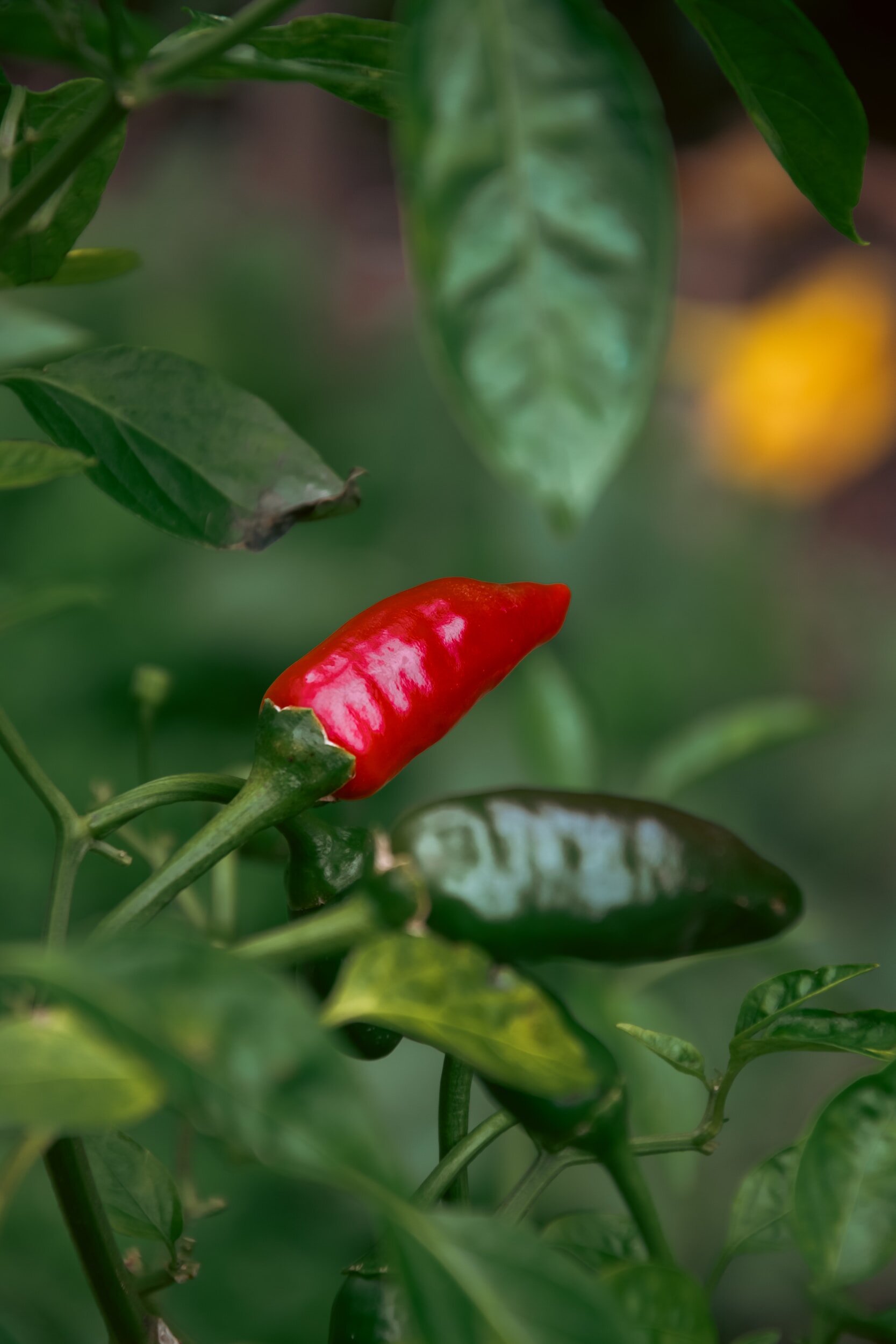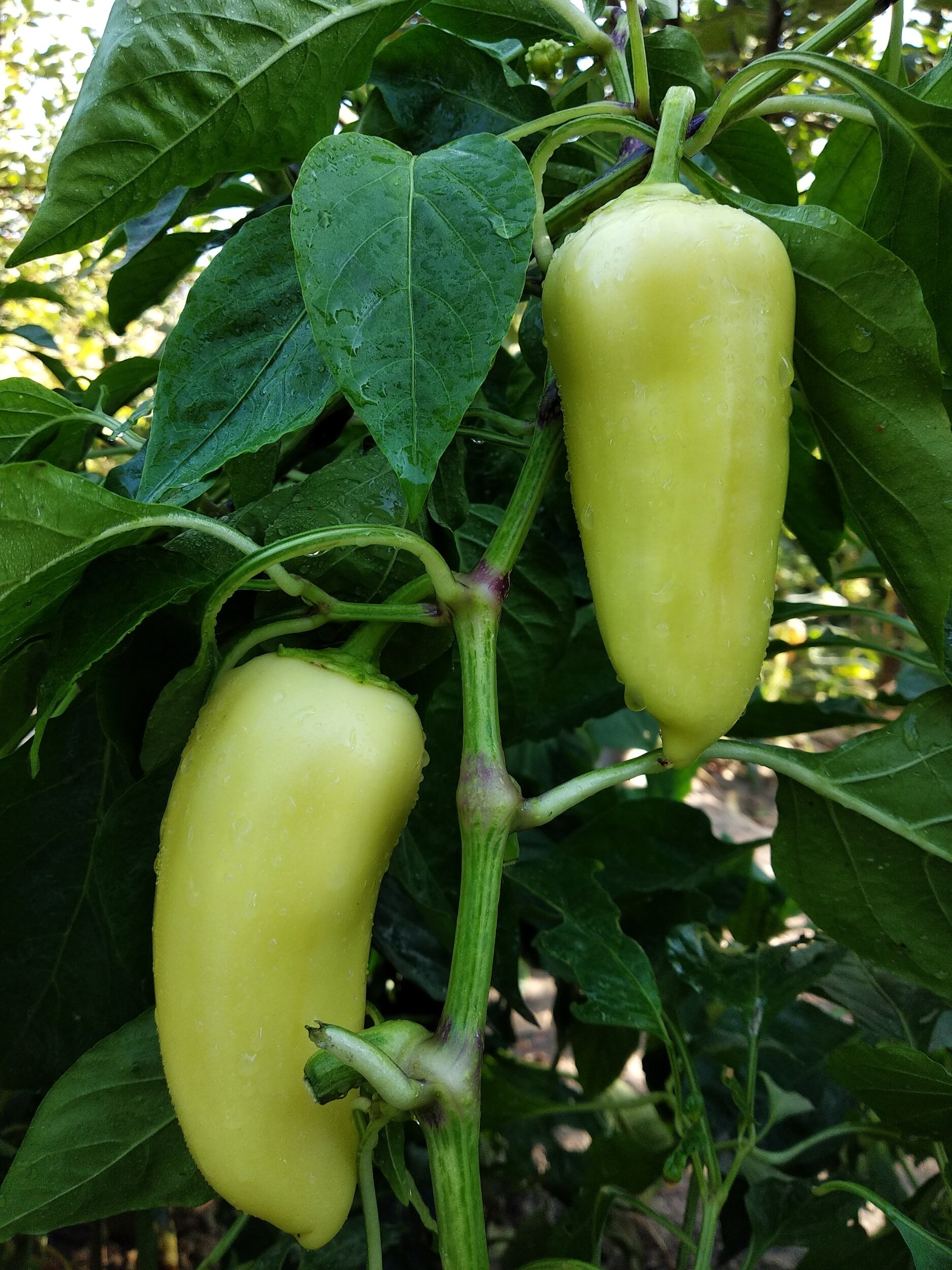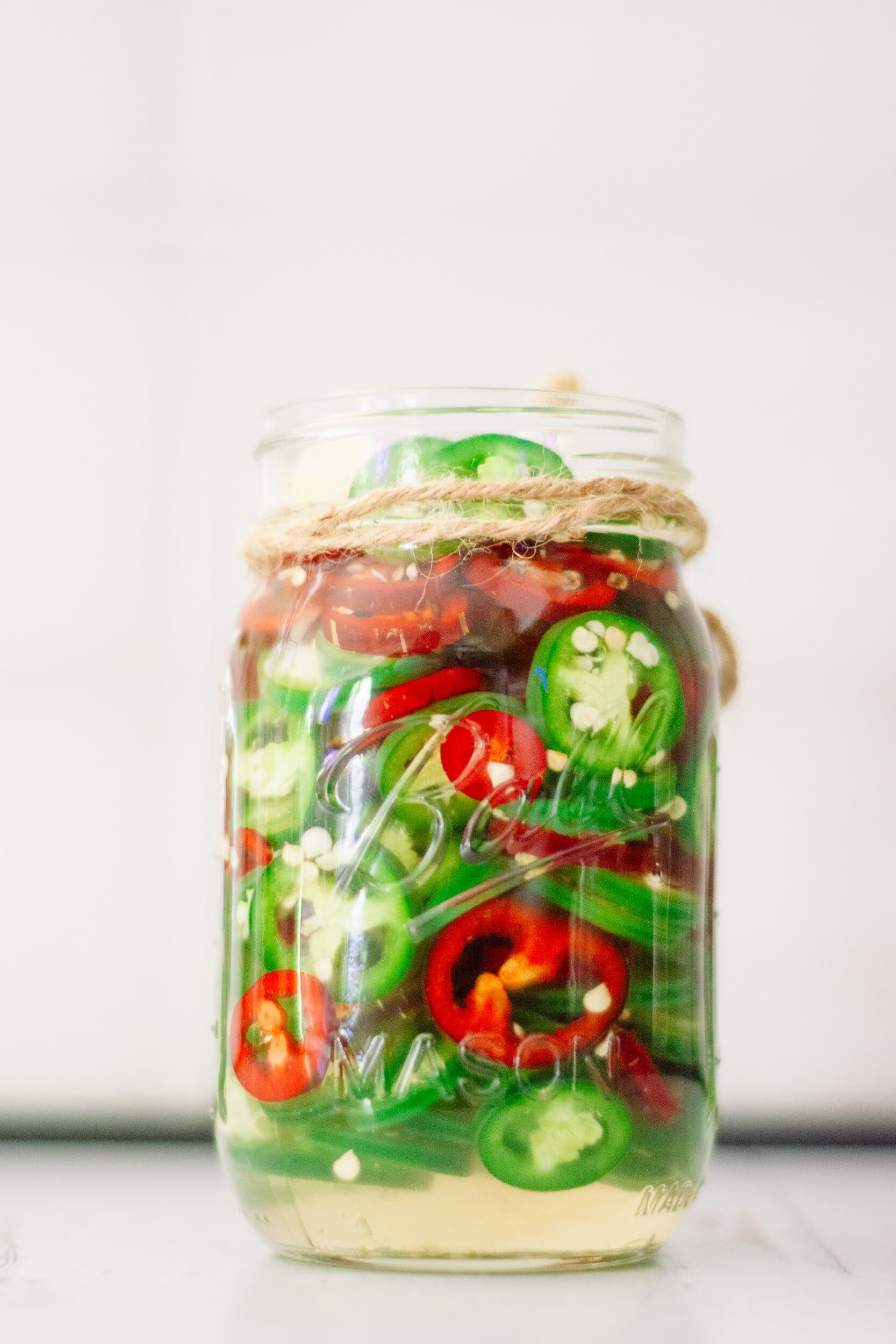Growing Jalapeños in Pots: A Spicy Addition to Your Garden
This article has links to products that I may make commission from.
Growing jalapeño peppers in pots can be incredibly rewarding.
This guide is designed to walk you through the essentials of nurturing jalapeño pepper seeds into thriving plants.
Known for their perfect balance of heat and flavor, jalapeño peppers are not just a kitchen staple but also an exciting addition to any garden.
In this guide, we delve into the nuances of selecting the best pepper seeds and potting soil, ensuring your jalapeño plants receive the care they need to flourish.
You'll learn the intricacies of growing jalapeños, from the initial planting of jalapeño pepper seeds to the joyous moment of harvesting your own home-grown jalapeño peppers.
Whether your goal is to add a spicy kick to your culinary creations or to enjoy the process of nurturing pepper plants, this journey offers a rewarding and flavorful experience.
With the right techniques and a touch of patience, you'll discover that growing jalapeño peppers in pots is not only about enhancing your meals with fresh spice but also about cultivating a living addition that brings beauty and zest to your home.
Let’s embark on this spicy adventure together, bringing the taste of fresh, homegrown jalapeño peppers straight to your table.
To learn more about growing and preserving peppers, check out my guides:
Choosing the Right Variety
Selecting the right variety of jalapeño seeds is crucial for success.
Jalapeños come in various types, each with its unique flavor profile, heat level, and growth characteristics.
Classic Green Jalapeños:
These are the traditional jalapeños known for their moderate heat and deep green color.
They are versatile in cooking and perfect for those who enjoy a balance of heat and flavor.
Here are the seeds I recommend:
Red Jalapeños:
As jalapeños mature, they turn red, offering a slightly sweeter and spicier taste.
Red jalapeños are great for adding color and a bit more heat to dishes.
Here are the seeds I recommend:
Milder Varieties:
For those who prefer less spicy peppers, varieties like 'Tam Mild Jalapeño' offer the jalapeño flavor without the intense heat.
They are ideal for salads, salsas, and dishes where a milder flavor is desired.
Here are the seeds I recommend:
Hotter Varieties:
For heat enthusiasts, varieties like 'Early Jalapeño' or 'Jalafuego' provide a significantly higher heat level.
These are perfect for spicy salsas and dishes where a strong kick is appreciated.
Here are the seeds I recommend:
Novelty Varieties:
There are also unique varieties like the 'Purple Jalapeño', which starts purple and turns red, offering an ornamental appeal and a unique flavor twist.
Here are the seeds I recommend:
When selecting seeds, also consider factors like growth habit and time to maturity.
Some varieties may be more compact, suitable for smaller pots, while others might have a longer growing season, requiring an earlier start indoors.
By choosing the right variety, you ensure a rewarding growing experience that aligns with your taste preferences and gardening conditions.
To learn more, check out my guide:
Selecting Containers and Soil
The right container and soil are foundational to the success of growing jalapeños in pots.
Here's what you need to know:
Choosing the Right Container
Size:
Jalapeño plants need room for their roots to spread.
A pot with a minimum of 12 inches in diameter and depth is ideal.
For multiple plants, consider larger or separate pots.
Material:
Containers can be made of plastic, terracotta, or ceramic.
Plastic pots retain moisture well and are lightweight, while terracotta pots offer better breathability but can dry out faster.
Drainage:
Ensure your pot has adequate drainage holes to prevent waterlogging, which can lead to root rot.
If your chosen pot doesn't have holes, you can drill them yourself.
Here is the container I recommend for growing jalapeños:
Selecting the Right Soil
Potting Mix:
Use a high-quality potting mix designed for container gardening.
These mixes are formulated to provide good drainage while retaining enough moisture and nutrients.
Here is the potting mix I recommend for growing jalapeños in containers:
pH Level:
Jalapeños prefer slightly acidic to neutral soil (pH 6.0 to 7.0).
You can test your soil's pH and adjust it if necessary using lime (to increase pH) or sulfur (to decrease pH).
Here is the soil pH meter I recommend using:
Soil Preparation
Before planting, moisten the potting mix slightly.
Fill your pot with soil, leaving about an inch of space from the top for easy watering.
This preparation ensures that your jalapeño plants have a healthy and nutrient-rich environment to thrive in.
By carefully selecting the right container and preparing the soil appropriately, you provide a strong foundation for your jalapeño plants to grow and produce a bountiful harvest.
To grow more in containers, check out my guides:
Planting and Germination
Successfully planting and germinating jalapeño seeds is a key step in growing healthy plants.
Here's a detailed guide:
Preparing Seeds for Planting
Seed Selection:
Choose high-quality jalapeno seeds for the best germination rates.
Here are my favorite jalapeno seeds to grow:
Seed Treatment:
Some gardeners soak seeds in warm water for a few hours to speed up germination, but this is optional.
Planting Seeds
Seed Trays:
Start by planting seeds in seed trays or small pots.
Seed trays allow for easy management and monitoring of seedlings.
Here are the seed trays I recommend using:
Soil for Seed Trays:
Use a seed starting mix or a fine-textured, sterile potting mix.
These mixes provide the right balance of aeration and moisture retention for seed germination.
Here is the seed starting mix I use:
Planting Depth:
Plant the seeds about a quarter-inch deep in the soil.
This depth provides the seeds with the right balance of moisture and warmth for germination.
Spacing:
Space the seeds at least an inch apart to allow for adequate growth.
Creating the Right Environment for Germination
Temperature:
Jalapeño seeds germinate best at temperatures between 75-85°F (24-29°C).
You can use a heat mat to maintain a consistent temperature if needed.
Here is the heat mat I use:
Moisture:
Keep the soil consistently moist but not waterlogged.
Use a spray bottle to gently water the soil without disturbing the seeds.
For more watering tips, check out my guide How Often to Water Seedlings.
Light:
Initially, focus on warmth rather than light.
Once the seedlings emerge, provide them with plenty of light—either natural sunlight or grow lights.
Transplanting Seedlings
When to Transplant:
Once seedlings have 2-3 true leaves (not counting the initial sprout leaves), they are ready to be transplanted into larger pots.
Handling Seedlings:
Be gentle when transplanting.
Handle the seedlings by their leaves, not their delicate stems.
Acclimatization:
Before moving the plants outdoors, acclimatize them to outdoor conditions by gradually increasing their time outside over a week.
By following these steps, you can ensure a strong start for your jalapeño plants, setting the stage for healthy growth and a bountiful harvest.
Learn how to grow more in containers with my guides:
Caring for Jalapeno Plants
Proper care is essential for your jalapeno plants to thrive and produce a plentiful harvest.
Here's how to ensure your plants get the care they need:
Watering
Frequency:
Jalapeno plants need consistent moisture.
Water them when the top inch of soil becomes dry.
Avoid letting the soil dry out completely, but also be cautious of overwatering.
This is a great way to use rainwater collected in a water butt.
Check out my guide Water Butts: Sustainable Water Storage for Your Garden.
Method:
Water deeply and evenly to encourage strong root growth.
Use a watering can or a hose with a gentle spray to avoid disturbing the soil or damaging the plants.
This is my favorite watering can:
Sunlight
Amount:
Jalapenos require full sun, meaning at least 6-8 hours of direct sunlight per day.
Position your pots in a spot where they can receive ample sunlight.
A south facing or west facing garden spot would be great.
Adjustment:
If growing indoors or in a region with less intense sunlight, consider using grow lights to provide the necessary light exposure.
These are my favorite grow lights:
Soil and Fertilization
Soil Quality:
Maintain a rich, well-draining soil.
Top up with compost or a balanced, slow-release fertilizer to provide essential nutrients.
Fertilization Schedule:
Fertilize jalapeno plants every 4-6 weeks during the growing season.
Avoid over-fertilization, which can lead to lush foliage at the expense of fruit production.
Here is the fertilizer I recommend for jalapeños:
Pruning and Support
Pruning:
While not always necessary, pruning can encourage bushier growth and better air circulation.
Remove any lower leaves that touch the soil to prevent disease.
Support:
As jalapeno plants grow, they may need support to stay upright, especially as they start bearing fruit.
Use stakes or small cages to provide support.
Here are the pepper cages I recommend using:
Pest and Disease Management
Pests:
Keep an eye out for common pests like aphids and spider mites.
Use insecticidal soap or neem oil as a safe and organic treatment option.
This neem oil is the best:
Diseases:
Prevent fungal diseases by ensuring good air circulation and avoiding overhead watering.
Remove and discard any infected plants or leaves.
Environmental Considerations
Temperature:
Jalapeños prefer warm temperatures.
Protect them from extreme heat or cold.
If temperatures dip, consider bringing potted plants indoors.
Humidity:
If your area is very dry, misting the plants can help increase humidity levels.
By providing consistent care and attention, your jalapeno plants will be well-equipped to produce a healthy and spicy harvest!
Learn how to grow even more veg in containers:
Common Challenges in Growing Jalapenos
Growing jalapenos in pots can be a rewarding experience, but it also comes with its set of challenges.
Being aware of these common issues can help you address them effectively:
1. Pest Infestations
Aphids and Spider Mites:
These tiny pests can be a nuisance, sucking sap from the plants and weakening them.
Regular inspection and prompt treatment with insecticidal soaps or neem oil can help control these pests.
Cutworms and Caterpillars:
These can damage young plants and leaves.
Handpicking them off or using organic Bacillus thuringiensis (Bt) can be effective.
2. Disease Problems
Fungal Diseases:
Damp conditions can lead to fungal diseases like powdery mildew or root rot.
Ensure good drainage and air circulation.
Avoid overhead watering to keep foliage dry.
Bacterial Spot:
This can cause leaf and fruit spotting.
Using disease-resistant seeds and maintaining clean gardening practices can help prevent it.
3. Environmental Stress
Sun Scorch and Heat Stress:
In very hot climates, jalapeno plants can suffer from sun scorch or heat stress, leading to wilted or discolored leaves.
Providing partial shade during the hottest part of the day can help.
Inconsistent Watering:
Overwatering or underwatering can lead to problems like blossom end rot or stressed plants.
Consistent watering, allowing the soil to dry slightly between watering, is key.
For more watering tips, check out my guide How to Use Watering Globes.
4. Nutrient Deficiencies
Nitrogen Deficiency:
Shown by yellowing and slow growth, this can be corrected with balanced fertilization.
Calcium Deficiency:
This leads to blossom end rot.
Using calcium-rich fertilizers or amendments can address this issue.
Try this Rot-Stop fertilizer to prevent blossom end rot:
5. Pollination Challenges
Poor Pollination:
Jalapeño flowers may not produce fruit if they are not adequately pollinated.
Encouraging pollinators like bees or manually pollinating flowers can boost fruit set.
6. Space and Container Limitations
Root Bound Plants:
As jalapenos grow, they might become root-bound in small pots, stunting their growth.
Regularly check root growth and repot into larger containers as needed.
By being vigilant and proactive in addressing these challenges, you can ensure your jalapeno plants grow healthily and yield a bountiful harvest.
For more container gardening inspiration, check out my guides:
Growing Pumpkins in Containers: A Complete Urban Garden Guide
Harvesting and Enjoying Your Peppers
The culmination of your hard work in growing jalapenos is the exciting phase of harvesting and enjoying the fruits of your labor.
Here are some tips and considerations for this stage:
When to Harvest
Timing:
Jalapenos typically take about 3-4 months from planting to reach harvest size.
The right time to harvest depends on your preference for flavor and heat.
Size and Color:
Harvest green jalapenos when they are 3-5 inches long and firm to the touch.
For a sweeter and spicier taste, wait until they turn red.
How to Harvest
Technique:
Use a sharp pair of scissors or pruning shears to cut the jalapeno from the plant, leaving a short portion of the stem attached.
Avoid pulling or twisting the peppers, as this can damage the plant.
Handling Care:
Jalapeños can cause skin irritation, so it's advisable to wear gloves when harvesting and handling them, especially if you're sensitive to spicy foods.
Storing Jalapenos
Short-Term Storage:
Fresh jalapenos can be stored in the refrigerator for up to a week.
Place them in a plastic bag in the vegetable drawer.
Long-Term Storage:
For longer preservation, jalapenos can be frozen, dried, or pickled.
Freezing is simplest: just slice or dice the peppers and freeze them in airtight bags.
Enjoying Your Harvest
Culinary Uses:
Fresh jalapenos can be used in a variety of dishes, from salsas and salads to stuffed or grilled recipes.
They add a wonderful kick to any dish.
Canning and Preserving:
Jalapeños can be canned as pickles or used in making relishes and hot sauces.
This is a great way to enjoy your harvest throughout the year.
Tips for Maximum Flavor
Watering Before Harvest:
Reduce watering a bit before harvesting; this can concentrate the flavors and increase the heat of the peppers.
Harvest Regularly:
Regular harvesting encourages the plant to produce more fruit.
Harvesting jalapenos is a rewarding experience, offering a fresh, homegrown spice to your kitchen.
Whether you prefer them green or red, spicy or mild, these versatile peppers can enhance a wide range of dishes, bringing the fruits of your garden directly to your table.
Conclusion
In summary, the journey of growing jalapenos in pots is a delightful and enriching experience that brings both flavor and joy to your gardening pursuits.
From selecting the right jalapeno pepper seeds to the satisfaction of harvesting your own spicy peppers, each step offers a unique opportunity to learn and grow alongside your plants.
Whether you're enhancing your culinary creations or simply enjoying the vibrant presence of pepper plants in your garden, the process of growing jalapenos is a testament to the wonders of garden life.
Remember, with a bit of care, patience, and the right conditions, anyone can transform a simple jalapeno seed into a flourishing pepper plant.
So, embrace this spicy adventure and enjoy the fruits of your labor, one delicious jalapeno pepper at a time.
Expand your container garden with these guides:
FAQs
How Often to Water Jalapeño Plants in Pots?
Jalapeño plants in pots require consistent moisture but should not be waterlogged.
During warmer months, watering every 1-2 days may be necessary, especially if the weather is dry and hot.
The top inch of soil should dry out slightly before the next watering.
In cooler months, reduce the frequency.
Always check the soil moisture at a depth of about an inch to gauge the need for water.
Best Soil for Jalapeños?
The best soil for growing jalapeños is a well-draining, nutrient-rich potting mix.
The ideal mix would have a combination of peat moss, vermiculite or perlite, and compost to ensure good drainage and adequate nutrient retention.
The pH should be slightly acidic to neutral (between 6.0 and 7.0).
Regularly adding organic matter or a balanced fertilizer can help maintain soil health.
Here is the potting mix I recommend for jalapeños.
Can You Grow Jalapenos Inside?
Yes, jalapenos can be successfully grown indoors.
The key is to provide them with sufficient light—ideally, a south-facing window or grow lights for 12-16 hours a day.
Also, maintain a consistent temperature around 70-85°F (21-29°C) and ensure good air circulation.
Water and fertilize as you would with outdoor plants, but be mindful of the reduced evaporation indoors.
Here are the grow lights I recommend for peppers.
Growing Jalapeños in Texas?
Texas, with its warm climate, is ideal for growing jalapeños.
However, during extremely hot and sunny days, provide some shade to prevent heat stress.
Also, ensure regular watering, as the soil in pots can dry out quickly.
Protect plants from sudden cold snaps in winter.
How Big Do Jalapeno Plants Get?
In ideal conditions, jalapeno plants can grow to be 2-3 feet tall and about 2 feet wide.
The size can vary based on the pot size, soil quality, and care provided.
Regular pruning and pinching off the tips can encourage a bushier growth.
How to Care for Jalapeno Plants in Pots?
Caring for jalapeno plants in pots involves regular watering, ensuring they get at least 6-8 hours of direct sunlight daily, and feeding them with a balanced fertilizer like this one every 4-6 weeks.
Monitor for pests and diseases, and provide support as the plant grows and begins to bear fruit.
Adjust care based on environmental changes like temperature and humidity.
Jalapeno Plant Size for Containers?
For a single jalapeno plant, a container that is at least 12 inches in diameter and depth is recommended.
This size allows sufficient space for root growth and adequate soil to retain moisture.
Larger containers can accommodate more plants but ensure each plant has enough space and resources to thrive.
Want to learn more about growing peppers? Check out my guides:





















































